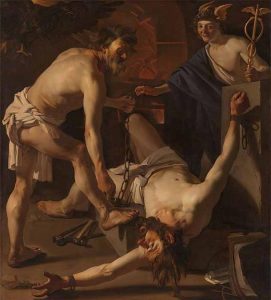The Ascent and Decline of Seth, the Volcanic Egyptian God

Numerous papers have been written about the Egyptian god Seth in recent years, but his essential identity seems to have evaded modern commentators. Seth’s role is pivotal in determining the historical sequence of catastrophic events in the eastern Mediterranean region during the second millennium BC. Modern interpretations of Seth variously describe him as a trickster, a sky god, a lord of the desert, the master of storms, disorder, or warfare, but nowhere is he described as the god of volcanoes, although Siegfried Morenz in The Egyptian Religion comes perilously close in his analysis of the Egyptian word sedjet (which means fire or flame): “ The ancient Egyptian word for volcano, sedjet is a complex and evocative word. It can refer to both the volcano itself and the eruption. Sedjet is often associated with the god Seth, who was the god of chaos and destruction. This is because volcanoes were seen as a force of nature that could bring both destruction and renewal.”

Hephaestus bounds Prometheus for gifting fire to humans, by Dirck van Baburen (1623) (CC0)
Gods of Volcanoes
Both the Greeks and Romans had a deity whose identity was evidently a metaphor for a volcano in the form of Hephaestus or Vulcan. According to Herodotus in his Histories the Egyptians equated their god Ptah with Hephaestus. Both Ptah and Hephaestus were gods of craftsmen and metalworkers and both were depicted as lame. This would seem to answer the question, but Ptah is essentially a passive figure, depicted in Egyptian mythology as a self-generated sky god with no parents, whilst Hephaestus in Greek mythology did have parents – he was depicted as the son of Hera and Zeus. However, it should be noted that in one version of mythology, Hephaestus’ lameness was caused by his mother throwing him down from Olympus. Whatever his origins there is little to commend Ptah as the prime volcanic deity during the period in question, since he plays a relatively insignificant part in surviving narratives.

Head of Ptah (late 8th–mid 7th century BC) Metropolitan Museum of Art (CC0)
According to modern interpretations, other than Ptah the Egyptians apparently had no volcanic deity in their pantheon in spite of the fact that Egypt is geographically bracketed by volcanoes both active and inactive. As a consequence it would certainly have felt the effects of any volcanic explosion such as the type envisaged during the destruction of Thera (Santorini)